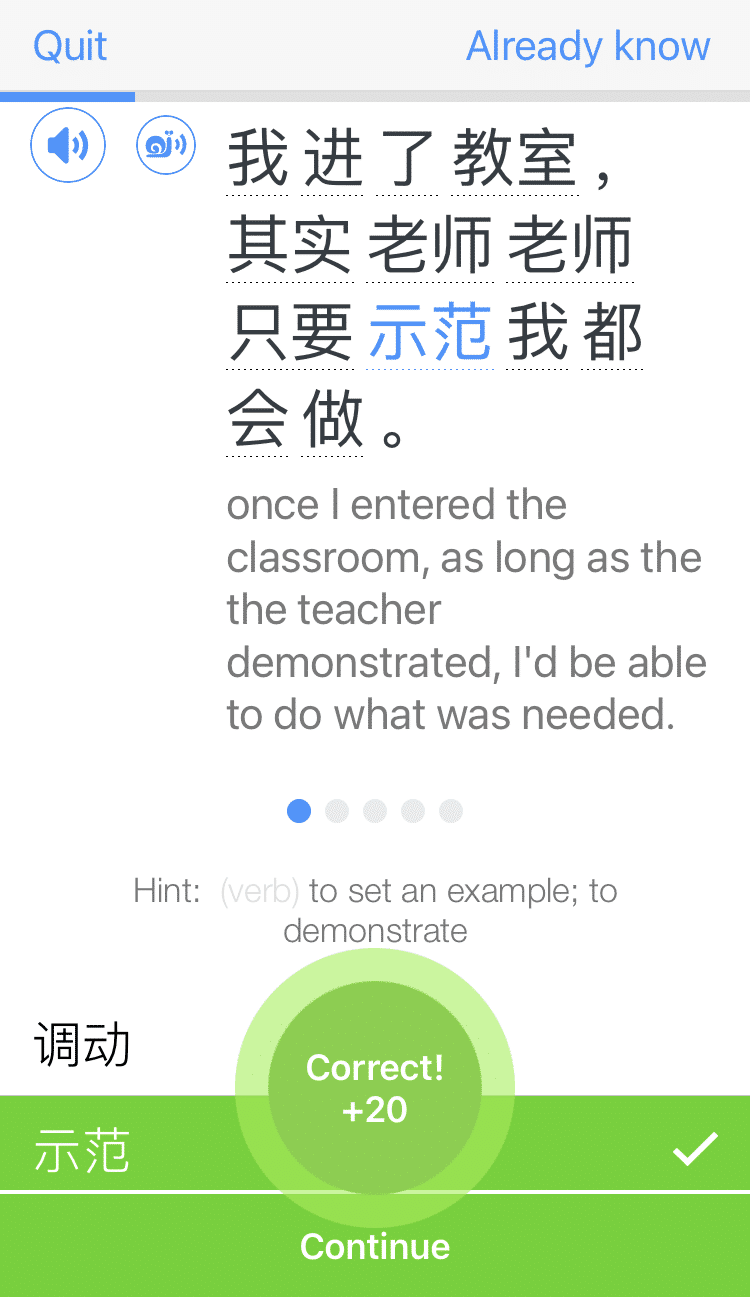3 Easy Ways to Use Plurals in Chinese

You may have heard that in Chinese, nouns are the same in both their singular and plural forms. You can’t just tack on an -s, like we do in English. It’s not that plurals don’t exist in Chinese. They just don’t manifest in the way you’d expect.
Let me break down how exactly you can differentiate between the singular or plural forms of nouns and pronouns in Chinese.
Download: This blog post is available as a convenient and portable PDF that you can take anywhere. Click here to get a copy. (Download)
1. Defining a Number
One of the most concrete ways to turn something from the singular to the plural would be identifying its specific number—like saying “six cats” as opposed to “a cat.” Grammatical numbers must be followed by the appropriate measure word (more on that below) and then the noun, like so:
Number + Measure Word + Noun
Here’s the breakdown of that formula:
Numbers
Before getting into the specifics of this plural form, let’s review our numbers. You learned them as a beginner when you were taught how to count and how to tell time. You might even know some Chinese number slang.
Whatever the case, here’s a list of numbers to refresh your memory. We’ll skip ahead to the bigger numbers to show you how those work in case you haven’t come across them yet.
| Examples of Numbers in Chinese | English Translation |
|---|---|
| 十 (shí) | 10 |
| 二十 (èr shí) | 20 |
| 五十 (wǔ shí) | 50 |
| 一百 (yī bǎi) | 100 |
| 一百零七 (yī bǎi líng qī) | 107 |
| 四百九十九 (sì bǎi jiǔ shí jiǔ) | 499 |
| 一千 (yī qiān) | 1,000 |
| 一万 (yī wàn) | 10,000 |
| 一亿 (yī yì) | 100,000,000 |
Chances are that you won’t be using the bigger numbers for Chinese plurals, but a little more information never hurt anyone.
One thing you need to note is when you’re using “two” as a grammatical number rather than a counting number in Chinese. When you’re indicating two of something, you’re supposed to use 两 (liǎng) instead of 二 (èr).
Measure Words
Also known as “classifiers,” Chinese measure words are specific to what’s being quantified, like arguably the most well-known one: 个 (ge). It’s pretty much the English equivalent of “of,” like in “I’ll have two of everything.”
Here’s how it would look in a sentence:
我有两个兄弟。 (wǒ yǒu liǎng gè xiōng dì.) — I have two brothers.
As generic as 个 is, try not to rely on it too much. Rather than studying a variety of measure words, Chinese learners often end up using 个 for everything. While in many instances 个 will work, it makes more sense to say “two cups of coffee” than “two of coffee.”
To get out of the habit of using 个 as your go-to measure word, below are some other classifiers you’ll need to pluralize your nouns. Please take note that this list isn’t complete. There are plenty more measure words in Chinese, but these are the ones you’d likely use on a regular basis.
| Basic Measure Words | English Translation | Example |
|---|---|---|
| 杯 (bēi) | cup [of coffee and tea] | 两杯咖啡 (liǎng bēi kā fēi) — two cups of coffee |
| 本 (bĕn) | unit for books and magazines | 四本杂志 (sì běn zá zhì) — four magazines |
| 份 (fèn) | share, portion, order [of food], unit for newspapers | 五份白饭 (wǔ fèn bái fàn) — five portions of rice |
| 间 (jiān) | unit for any kind of room | 六间卧室 (liù jiān wò shì) — six bedrooms |
| 辆 (liàng) | unit for vehicles | 三辆巴士 (sān liàng bā shì) — three buses |
| 瓶 (píng) | bottle | 九十九瓶啤酒 (jiǔ shí jiǔ píng pí jiǔ) — 99 bottles of beer |
| 条 (tiáo) | unit for long, winding objects like roads, rivers, snakes, fish, etc. | 十二条路 (shí èr tiáo lù) — 12 roads |
| 张 (zhāng) | sheet [of paper or bedsheets]; unit for rectangular objects like beds and tables | 七张纸 (qī zhāng zhǐ) — seven sheets of paper |
| 只 (zhī) | unit for animals and one of a pair of hands, feet, ears or eyes | 一只眼睛 (yī zhī yǎn jīng) — one eye |
| 支 (zhī) | unit for long, thin objects like pencils, pens and cigarettes | 八支蜡笔 (bā zhī là bǐ) — eight crayons |
Some nouns are addressed as multiples, like a pair of socks, a pack of cigarettes, etc. In cases like these, we would use special measure words. Here are some of those, along with their definitions and examples:
| Special Measure Words | English Translation | Example |
|---|---|---|
| 双 (shuāng) | pair, for items that always come in pairs | 三双筷子 (sān shuāng kuàizi) — three pairs of chopsticks |
| 对 (duì) | couple, for nouns that don't necessarily come in pairs | 一对学生 (yī duì xué shēng) — a couple of students |
| 打 (dǎ) | dozen | 五打鸡蛋 (wǔ dǎ jī dàn) — five dozen eggs |
| 包 (bāo) | pack or packet | 两包口香糖 (liǎng bāo kǒu xiāng táng) — two packs of gum |
| 群 (qún) | group of people or animals like crowds, flocks, herds or swarms | 一群人 (yī qún rén) — a crowd/group of people |
You might be confused by some of these measure words, since they don’t indicate specific amounts, like a pack or group. Although they’re nonspecific in terms of the total number, these special classifiers can still be “modified” by a grammatical number (e.g., one group of students, five groups of students, etc.). It’s important that you understand this now before moving on to the ambiguous plurals.
2. Using Ambiguous Plurals
Now that you know that “groups” and “packs” don’t count as ambiguous plurals, what does? An ambiguous plural in Chinese is anything that cannot be modified by a grammatical number, like “some” or “many.” Thus, the formula goes:
Ambiguous Plural + Noun
Let’s take a look at those ambiguous plurals and their usages:
| Ambiguous Plurals | English Translation | Example |
|---|---|---|
| 几 (jǐ) | some, several | 几道菜 (jǐ dào cài) — some dishes |
| 一些 (yī xiē) | a few, some* *Despite there being a number in 一些, meaning "a few," it doesn't function as a grammatical number. Besides, no one would ever say, "two fews." | 一些错误 (yī xiē cuò wù) — a few mistakes |
| 数 (shù) | several | 数星期 (shù xīng qí) — several weeks |
| 不少 (bù shǎo) | quite a few; literally translates as "not a few" | 不少高校 (bù shǎo gāo xiào) — quite a few universities |
| 很多 (hěn duō) | a lot; literally translates as "very many" | 很多猫 (hěn duō māo) — a lot of cats |
3. Adding 们 (men)
When it comes to Chinese nouns and pronouns specifically pertaining to people, you can simply attach 们 (men) to them, so they’d look like this:
| Singular Pronouns | Plural Pronouns |
|---|---|
| 我 (wǒ) — I/me | 我们 (wǒ men) — we/us |
| 他 (tā) — he/him | 他们 (tā men) — they/them [male and mixed gender] |
| 她 (tā) — she/her | 她们 (tā men) — they [female] |
| 它 (tā) — it | 它们 (tā men) — they [animals] |
In turn, adding 们 “conjugates” the verb when used in a sentence. And I use quotations because the verb itself doesn’t actually change in Chinese—it’s just the meaning that’s altered in the verb’s plural version. (Ah, the nuances of the Chinese language.)
You can also add 们 to nouns like “teacher,” “student,” “police officer,” etc. However, when a noun is the object of a sentence, 们 isn’t completely necessary to make it plural. Some think it sounds strange to add it, so it’s normally omitted in everyday speech. It’s a personal preference, really, as the rest of the sentence usually provides enough contextual evidence to indicate a plural noun.
Check out these two sentences:
他给学生们作业。 (tā gěi xué shēng men zuò yè.) — He gives the students homework.
他给学生作业。 (tā gěi xué shēng zuò yè.) — He gives the students homework.
From the context above, 们 doesn’t do much to contribute to the overall meaning, so why include it?
When Not to Use 们
When there’s a grammatical number:
Like the ambiguous plurals in the previous section, 们 doesn’t precisely define how many of the associated nouns or pronouns are involved. If the sentence specifies the number, adding to the human noun or pronoun would be redundant.
When the noun or pronoun is non-human:
As previously stated, 们 is only applicable to human nouns and pronouns. The only time you’d see 们 used with animals is when they’re being personified in stories.
When you’re using 您 (nín):
There’s a bit of debate about using 们 with 您 (nín), the polite way of addressing “you.” If you think about it, there’s not really a formal way of saying “you all” or “you guys,” is there?
Instead, native Chinese speakers use 各位 (gè wèi) for “everybody” and 女士们先生们 (nǚ shì men xiān shēng men) for “ladies and gentlemen,” so you can use those as the plural for 您.
大家 (dà jiā) wouldn’t be considered a plural for 您 since it’s an informal way of addressing “everyone.”
各位 and 女士们先生们 are saved for formal settings and addressing large groups of people. You’d normally hear them as a greeting during the opening remarks at an event or in a speech, or read them in an email.
女士们先生们晚上好。 (nǚ shì men xiān shēng men wǎn shàng hǎo.) — Good evening, ladies and gentleman.
各位家长、同学们好。 (gè wèi jiā zhǎng, tóng xué men hǎo.) — Hello, parents and teachers.
Note that 各位 needs to be followed by a human noun.
When you’re using 谁 (shéi):
The reason behind this one is unknown, but it might have to do with the fact that 谁 (shéi) means “who,” which refers to an individual rather than a group—though that’s just my guess.
When you’re using 这 (zhè) and 那 (nà):
这 (zhè) and 那 (nà) mean “this” and “that” respectively, and because there’s no uncertainty in the amount, both are followed by a measure word and a noun:
This/That + Any Measure Word + Noun
But the plural is where it gets a little weird. To say “these” and “those,” you’d say 这些 (zhè xiē) and 那些 (nà xiē) and then the noun, with no measure word in between. “These” and “those” are actually “this” or “that” combined with 一些, which you may recall means “a few.”
So what we’re really seeing are the shortened versions of 这一些 (zhè yī xiē) and 那一些 (nà yī xiē), with the rough translation being “a few of this” and “a few of that.” It makes sense that an ambiguous plural would be needed to describe a vague quantity.
This/That + 些 (xiē) + Noun
Let’s take a look at a couple of examples to compare “this” and “these,” or 这 and 这些:
你在哪里买这本书? (nǐ zài nǎ lǐ mǎi zhè běn shū?) — Where did you buy this book?
你在哪里买这些书? (nǐ zài nǎ lǐ mǎi zhè xiē shū?) — Where did you buy these books?
Now for “that” and “those,” or 那 and 那些:
她要买那辆车。 (tā yāo mǎi nà liàng chē.) — She wants to buy that car.
她要买那些车。 (tā yāo mǎi nà xiē chē.) — She wants to buy those cars.
For more examples of the proper usage of 们 and other Chinese plural indicators, check out the videos on the language learning platform FluentU.
FluentU takes authentic videos—like music videos, movie trailers, news and inspiring talks—and turns them into personalized language learning lessons.
You can try FluentU for free for 2 weeks. Check out the website or download the iOS app or Android app.
P.S. Click here to take advantage of our current sale! (Expires at the end of this month.)
It took a while to get through the grammatical constructions of plurals, but we made it! It helps to go in-depth with these little rules. And knowing which measure word goes with which noun totally shows how much of a language pro you are, compared to your peers who are still using 个 for everything.
And One More Thing...
If you want to continue learning Chinese with interactive and authentic Chinese content, then you'll love FluentU.
FluentU naturally eases you into learning Chinese language. Native Chinese content comes within reach, and you'll learn Chinese as it's spoken in real life.
FluentU has a wide range of contemporary videos—like dramas, TV shows, commercials and music videos.
FluentU brings these native Chinese videos within reach via interactive captions. You can tap on any word to instantly look it up. All words have carefully written definitions and examples that will help you understand how a word is used. Tap to add words you'd like to review to a vocab list.
FluentU's Learn Mode turns every video into a language learning lesson. You can always swipe left or right to see more examples for the word you're learning.
The best part is that FluentU always keeps track of your vocabulary. It customizes quizzes to focus on areas that need attention and reminds you when it’s time to review what you’ve learned. You have a 100% personalized experience.
Start using the FluentU website on your computer or tablet or, better yet, download the FluentU app from the iTunes or Google Play store. Click here to take advantage of our current sale! (Expires at the end of this month.)
Download: This blog post is available as a convenient and portable PDF that you can take anywhere. Click here to get a copy. (Download)











